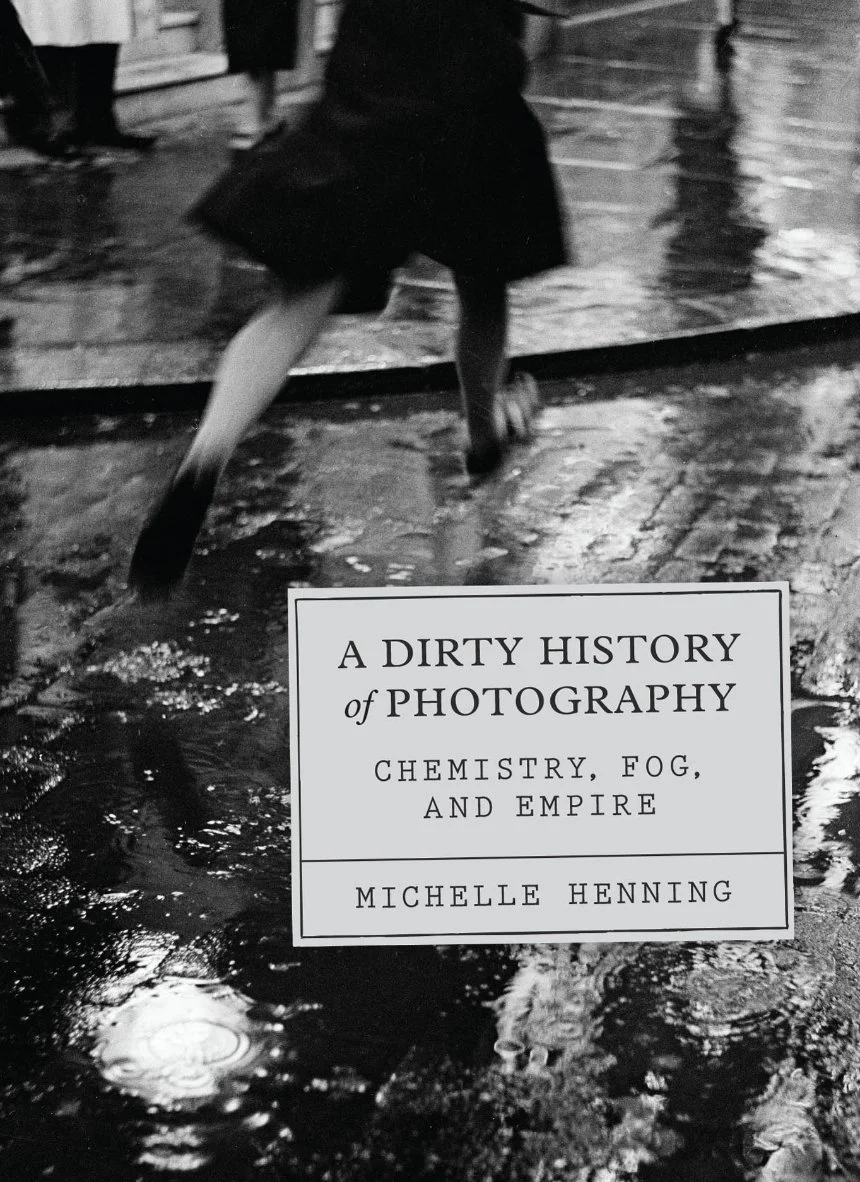
Chinatowns: Tong Yan Gaai, Photographs by Morris Lum
Morris Lum reveals how Chinatowns across North America are defined by both their evolving architecture and their rich cultural identity. Awarded the 2023 Photography Network Project Grant.

At the Limits of the Gaze: Selected Writings by Takuma Nakahira
At the Limits of the Gaze is the first English-language volume of essays by Japanese photographer Takuma Nakahira, known for his participation in Provoke. The collection spans 1970-1976, and challenges the expressive limits of photography.

Tracy Hills
Tracy Hills is a collaboration between Los Angeles-based photographers Ryan McIntosh and Yogan Muller in which they explore and document Tracy Hills—a new master-planned community of 4,700 homes currently being built in the central valley of California.

Depth Effects: Dimensionality from Camera to Computation
An alternative history of photography that reframes current practices of computational imaging.

A Dirty History of Photography: Chemistry, Fog and Empire
An environmental history of chemical photography through the lens of its deep connections to empire and industry.

Print Matters: Media and Modernity in Illustrated Magazines, 1910-1970
This edited volume presents a nuanced exploration of how illustrated magazines shaped global visual culture between 1910 and 1970.

Heap-O-Livin': Selections from the Lora Webb Nichols Archive 1899-1962
Heap-O-Livin’ presents images by Wyoming photographer Lora Webb Nichols (1883–1962), who documented Encampment’s ranching and mining life and the women who sustained it. Amid isolation and patriarchy, Nichols revealed a vibrant female community whose social visits and picture-making captured both domestic labor and the joy of women’s companionship.

Amos Badertscher: Images and Stories
The long-awaited first career survey from photographer Amos Badertscher, who comprehensively documented a uniquely American queer underworld

A History of Male Photographers: Analyzing Men as Men in Scientific, Commercial, and Art Photography, 1870 to the Present
This book shows how from the nineteenth century to the present, the demands and privileges of masculinity shaped photographers’ careers. The case studies, photo formats, and cultural contexts explored here are diverse, but what links them is a concern for how men navigate(d) the photography profession, whether they thought of themselves as scientific photographers, educators, or artists.

Afterimages of Apartheid: Photography and Resistance
Afterimages of Apartheid shows how photographs can be mobilised as a critical tool for understanding the ongoing effects of apartheid in contemporary South Africa. This vivid account of the photography of apartheid will be of interest to students and researchers across the fields of South African history, visual studies, memory studies, art history, photography studies and transitional justice.

Arnold Newman’s Magazine World
American photographer Arnold Newman, over his eight-decade career, became known for his portraits of post-WWII artists and icons, often shot for magazines. This publication explores how magazine commissions shaped his work and reputation.

Negative Originals: Race and Early Photography in Colombia
In Negative Originals, Juanita Solano Roa reexamines early 20th-century Colombian photography, revealing how racial ideologies were constructed and contested. Taking the photographic negative as methodology, she uncovers marginalized subjects and challenges dominant narratives of race, gender, and progress in Colombian visual history.

Verdant Land
Verdant Land by Kathya Maria Landeros is a photographic exploration of her family’s century-long migration between Mexico and the U.S., shaped by agricultural labor. Blending personal memory with broader histories, the project reflects on immigrant contributions to the American West, honoring ancestors like her great-grandmother Mama Chuy and generations of Latino workers.
Landeros traveled through western American states between 2011-2024, creating photographs that reflect our interdependence both with the landscape and with one another.

Documenting Industry: Photography, Aesthetics, and Labor in India
The volume probes the co-constitution of industry and photography in postcolonial India by looking at selected sites of industrial and artistic practices and their interwoven histories. Part of the Visual Media and Histories Series, this book will be of interest to students and researchers of the history of photography, visual media studies, Indian history, art history, cultural studies, and South Asian studies.

The Cities We Need: Essential Stories of Everyday Places
Much of the work of being human happens in everyday places: we become able to be ourselves, see each other, and be a community. The Cities We Need, by photographer and urbanist Gabrielle Bendiner-Viani, shows us that everyday places are where we set the groundwork for a functional society.

Riddles of the Sphinx
This entry in the British Film Institute’s “Film Classics” series is devoted to the feminist avant-garde film Riddles of the Sphinx (1977). Lamm’s study of this intricate film explores how it utilizes language to challenge Hollywood’s dominant images of women and portray maternal care as a valued form of work, full of aesthetic pleasures and feminist possibilities.

Wolfgang Tillmans. Textes
On the occasion of Wolfgang Tillmans's solo exhibition at the Centre Pompidou, the original MoMA Reader has been translated to French. It has also been extended with interviews and publications from the past four years.

Recuerdo: Latin American Photography at the AGO
Discover Recuerdo: Latin American Photography at the AGO, a free digital catalogue exploring powerful photographic works from Mexico to Argentina. Curated by Marina Dumont-Gauthier, it features modernist icons, Cold War reportage, and contemporary voices, including Graciela Iturbide and Rafael Goldchain. The publication explores photography’s role in shaping memory and identity.

Picturing Aura: A Visual Biography
The remarkable modern history of efforts to visualize the human aura, the photographic technologies deployed, and the lives of its pictures in religion, science, art, and culture.

Amos Badertscher: Images and Stories
The long-awaited first career survey from photographer Amos Badertscher, who comprehensively documented a uniquely American queer underworld.
